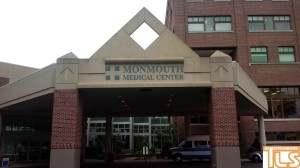 Feeling like you have the case of the “winter blues” that just won’t go away? You may be suffering from a psychological condition called Seasonal Affective Disorder, or SAD, a form of major depressive disorder (MDD) that normally occurs in winter months, when there is less natural light. SAD is more common the farther north you live. The only distinction between MDD and SAD is the timing of the episodes, which occur during the short, dark days of winter in patients with SAD.
Feeling like you have the case of the “winter blues” that just won’t go away? You may be suffering from a psychological condition called Seasonal Affective Disorder, or SAD, a form of major depressive disorder (MDD) that normally occurs in winter months, when there is less natural light. SAD is more common the farther north you live. The only distinction between MDD and SAD is the timing of the episodes, which occur during the short, dark days of winter in patients with SAD.
Millions of Americans suffer from SAD. Symptoms are characterized by feelings of sadness, loneliness, altered sleeping and eating patterns, negative thoughts and feelings of guilt, lethargy and disturbed sleep patterns; overeating and developing a craving for carbohydrates and sweet foods; difficulty with concentration and memory; and social problems such as finding it difficult to be around others.
“These symptoms – which increase during the winter as it coincides with shorter days and less light exposure – are serious if they start to impact your daily activities,” said Mary Jane Maser, Ph.D., Clinical Director of Stepping Stones Intensive Outpatient Program at Barnabas Health Behavioral Health Center.
The condition is more common in women than in men, and illness typically begins around age 20. Some people experience symptoms severe enough to affect quality of life, and a small percentage require hospitalization. Many people with SAD report at least one close relative with a psychiatric disorder, most frequently a severe depressive disorder or alcohol abuse.
“Although SAD can have a devastating effect on a person’s life, many people with SAD can be helped with available treatments including light therapy, psychotherapy and medications,” said Dr. Maser. “If you or someone you know is experiencing the signs of SAD, it’s important to seek the help of a professional for a potential diagnosis and treatment plan.”
Once the diagnosis SAD is made, treatment options include bright light therapy, an effective method that uses a light box to increase the amount of light during certain times of the day. Other options may include medications or cognitive behavioral therapy, which involves relearning how to react to certain situations and being aware of personal triggers. To help those who struggle with depression during the course of the year, Dr. Maser suggests keeping the house well lit and going outside to get as much light as possible as well as outdoor activity, eating a well-balanced diet, especially during the winter months.
[TLS]
